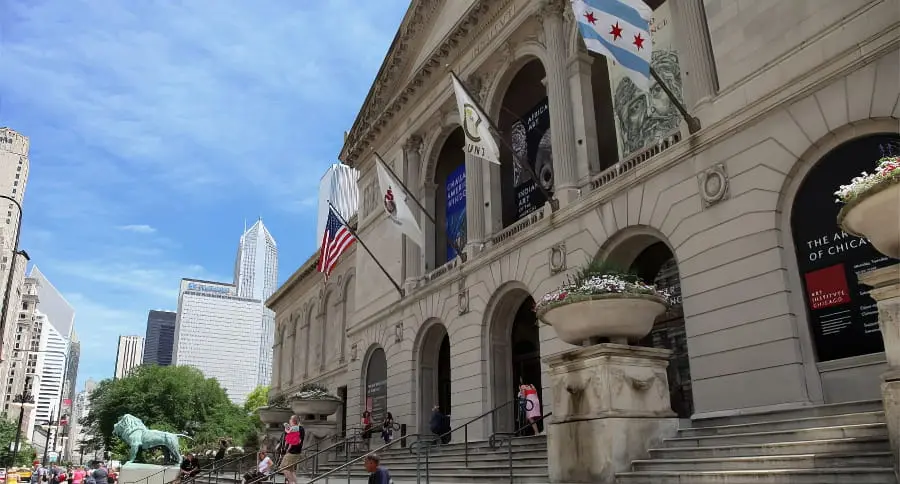Art Institute of Chicago, Grant Park

Located at the west end of Grant Park, in the heart of Chicago's landmark Historic Michigan Boulevard District, the Art Institute of Chicago was one of the first art museums and art schools in the United States when it was built in 1893. It remains the second largest museum in the country, after New York's Metropolitan Museum of Art (MET).
The Art Institute of Chicago houses one of the world's most important collections of Impressionist and Post-Impressionist art, including more than 30 paintings by Claude Monnet, works by Henri Matisse, Paul Gauguin, Vincent Van Gogh (including a self-portrait from 1887), Paul Cézanne, Henri Toulouse-Lautrec, Pierre-Auguste Renoir, and George Seurat, whose 1883 painting "Un dimanche après-midi à l'Île de la Grande Jatte" is one of the highlights of the tour. This oil on canvas, measuring over two by three meters, is a remarkable example of the Pointillist school. Surprisingly modern, it inspired Monet, Sisley and Van Gogh.
The American art collection includes works by Edward Hopper, Mary Cassatt, and Grant Wood's famous painting "American Gothic," which has become a cultural icon and one of the most reproduced - and parodied - images in history. It depicts an Iowa farmer and his daughter in the 1930s.
In addition to its permanent collection, the Institute focuses on African American and Asian art, as well as modern and contemporary decorative arts. Its American Decorative Art galleries feature furniture designed by Frank Lloyd Wright.
Chicago's Route 66 officially begins at the corner of Adams Street and Grant Park, in front of the Art Institute.
